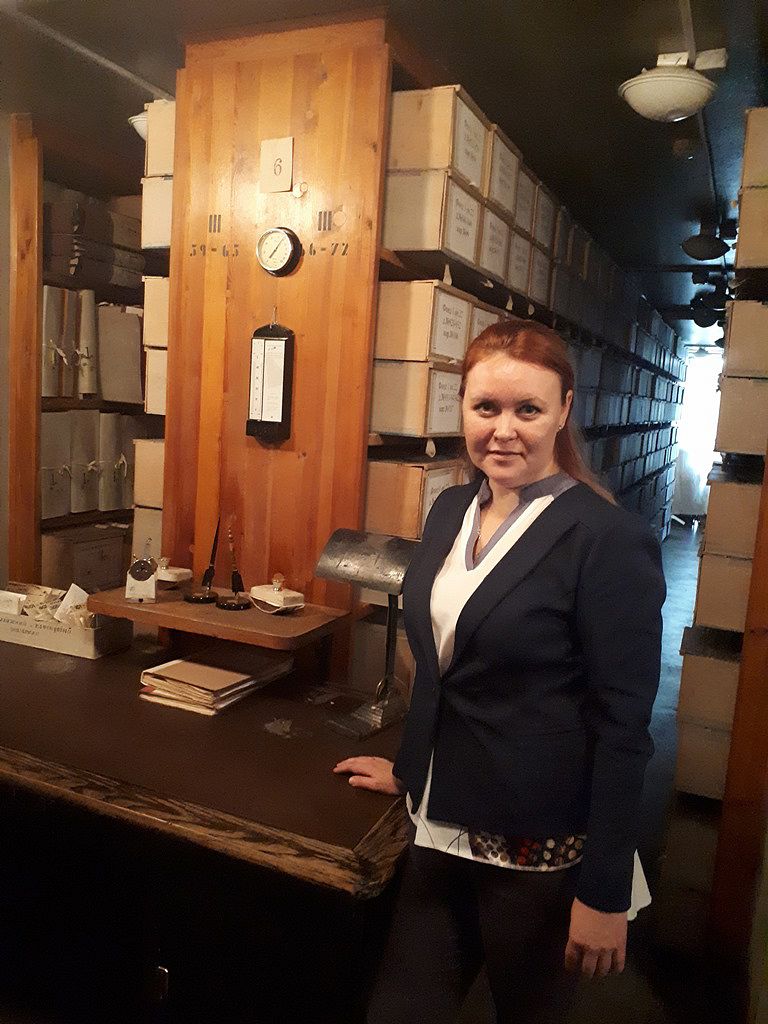AltSU historians recreate the picture of the urban population of Siberia existed 120 years ago
 A project entitled “Urbanization processes in Siberia at the turn of the XIX-XX centuries: an integrated approach to the analysis of the urban population based on the materials of the First General Census of the Russian Empire in 1897” won the competition for the Presidential Program for Research by Scientific Groups led by young scientists of the Russian Science Foundation, winning a grant support of 3 million rubles.
A project entitled “Urbanization processes in Siberia at the turn of the XIX-XX centuries: an integrated approach to the analysis of the urban population based on the materials of the First General Census of the Russian Empire in 1897” won the competition for the Presidential Program for Research by Scientific Groups led by young scientists of the Russian Science Foundation, winning a grant support of 3 million rubles.
One of the intermediate results of the research by the AltSU team of scientists, devoted to the analysis of the database of primary materials of the First General Census of the Russian Empire in 1897, was recently published by the journal approved by Higher Attestation Commission “Historical Informatics”.
“Creating a database of primary materials is one of the main objectives of our project. We are creating a truly unique database of the population of cities in Siberia, since for a long time it was believed that the primary materials of the 1897 census were completely lost. This was due to the fact that, according to contemporaries of the census, all census forms were sold for processing. On the other hand, the materials of modern censuses are also most often destroyed. Therefore, it was believed that the materials were not preserved. But at that time, the census forms were compiled in two copies: the first was sent to St. Petersburg for processing by the Central Statistical Committee, and the second, as an insurance copy, remained in the provinces. So these second copies were preserved in some regional archives. Based on them, we are now creating a source-oriented database, trying to keep the information from the census forms in this database as fully as possible. Very soon, we plan to submit an online version of this database” says the project manager.
The geography of the research work of historians of Altai State University covers the modern administrative territory of three federal districts of the Russian Federation: the Far Eastern, Siberian and partially Ural. The archival material of the cities of the Tobolsk Province is most fully preserved - this is about 80% of the census forms, and even more in some settlements. According to Elena A, these are good representative sets of documents, according to which you can get an idea of almost the entire population of individual cities, and for some, such as Blagoveshchensk and Olekminsk, a partial presentation.
“An interesting fact is that in the northern cities, Surgut and Berezov, census forms were preserved in the National Archives of Finland. At the beginning of the twentieth century, after the census materials were processed, they were donated by Russia to the Finno-Ugric ethnographic society of Finland, which collected worldwide information about ethnic groups associated with the Finno-Ugric tribes which lived in the north of Tobolsk province. These are just invaluable and unique materials for us, which, unfortunately, have not been preserved in any Russian archive” added Elena Bryukhanova.
The research team of the project worked in the State Archives of Altai Territory, Tomsk Region, Krasnoyarsk Territory, Yakutsk Region, in the Historical Archives of the Far East and the Tyumen Region, looking for materials from the First General Census of the Russian Empire in 1897 throughout Siberia.
“Searching for data in Altai Krai, we found out that there were also third copies of census forms. But this was not data on the urban, but on the rural population - lists of peasants of certain volosts. In particular, we found lists of Borovlyanka volosts of the Barnaul district - this is about 400 forms with first and last names, occupation and place of residence. The complexity of the search for such third copies is that the district archives do not indicate their belonging to the census documents, therefore, perhaps in the future we will be able to find data on the population of other volosts. We really hope so!” emphasizes the project manager.
Prior to the introduction of the quarantine regime, AltSU historians managed to collect archival material in the Tobolsk and Tomsk provinces. Currently, they are completing work on the creation of a database of the urban population of these territories on the basis of census forms. After removal of the quarantine restrictions, an expedition to the Far East is planned to work in local archives.